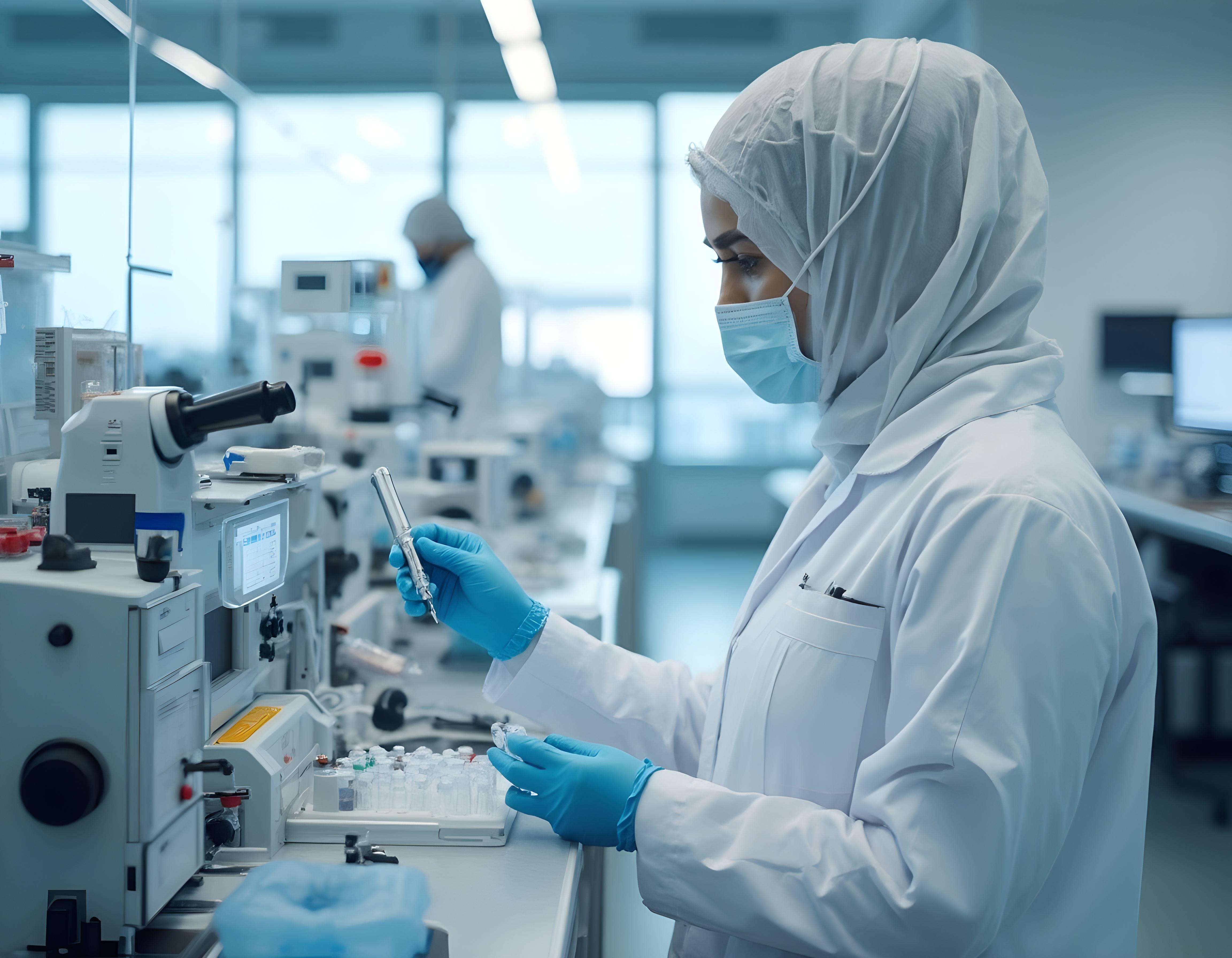

Our comprehensive test menu is designed to cover a wide range of health aspects to ensure thorough preventive care. We offer specialized tests for metabolism, hormones, vitamins, and growth indicators, which are crucial for overall well-being. Our cancer screenings and cardiac health assessments are tailored to detect early signs of serious conditions. Additionally, we provide infertility and pregnancy markers to support reproductive health. Special emphasis is placed on monitoring and managing diabetes, thyroid, and other endocrine disorders, ensuring that all critical areas of health are thoroughly evaluated and addressed.

Chemiluminescence Immunoassay (CLIA) provides a sensitive, high throughput, fully automated immunological technique, which has revolutionized Immunodiagnostics. It measures the intensity of light emitted when the complex of antigen in the patient's sample and the enzyme linked antibody react with chemiluminescent molecule (such as luminol) producing a weak signal. The enzyme component then provides signal amplification.
ELISA is an immunological technique which is used to detect the presence of an antibody or an antigen in a sample. A known amount of antigen is coated on a solid phase like that in the well of a polystyrene microtitre plate and sample containing specific antibodies is added in the wells to allow antigen-antibody binding. The immune complex thus formed is linked to an enzyme, which acts on a substrate to give a coloured reaction which is detected using ultramodern ELISA plate readers. Since ELISA technique utilizes enzyme labels to produce detectable signals, it is given the name Enzyme-Linked Immunosorbent Assay.
When molecules in the mixture are very similar, direct quantification becomes difficult. HPLC is a form of column chromatography used frequently to separate, identify and quantify compounds. It consists of a stationary phase that absorbs the analytes and holds them for a particular time. All the molecules in the mixture will spend different time with different stationary phase and then come out at the end. The time that a molecule takes to travel from one end to the other end of stationary phase is known as Retention time. Hence, all the molecules display their own unique retention time for particular stationary-mobile phase combination. Silicagel is most frequently used as the adsorbent which is packed in a column. HPLC columns are densely packed as packing directly affects the resolution. A detector is kept at the end of the column. As the molecules come out from the end, the detector detects and gives a peak on chromatogram. The peak area calculation quantifies the molecule of interest on the basis of standard values.
Akin to HPLC, electrophoresis is another emerging technology chaperoning the diagnostic industry. Conventionally, electrophoresis has been utilized for years in the field of research for analysis of genetic material as well as proteins. In the field of diagnostics, this technology has been exploited for analysis of various proteins from blood, serum as well as urine.
In clinical chemistry, estimation of serum electrolytes is also an essential, as their concentrations affect variety of biological functions. The simple instrumentation and ease of operation makes it again a desirable addition to the lab floor to complete the clinical biochemistry profile.
Fluorescence flow cytometry is the principle involved in enumerating cell-counts by staining them with fluorescent dyes followed by subsequent detection using laser technology. Flow cytometry involves enumeration of cells based on their physical as well as chemical nature. This technique can enumerate thousands of cells in a minute.
Different fluorescent dyes absorb light at different wavelengths and upon excitation, emit the light at a higher wavelength. This principle is exploited to detect the chemical composition of various cells using the Fluorescence Flow Cytometry method. Thus, multiple dyes are used simultaneously to stain different cells and, with the help of a laser beam using the principle of hydrodynamic focusing, the chemical properties of the cells are studied depending on the stain absorbed by them.
At Thyrocare, we use the hematology automated analyzer SYSMEX XN-1000 to enumerate the different blood cell types using the fluorescence flow cytometry technique. The fluorocell WNR stains WBCs, basophils and NRBCs while fluorocell WDF stains the neutrophils, eosinophils, monocytes and lymphocytes.
Nephelometry is a quantitative method, based on the principle that a dilute suspension of small particles will scatter light (usually a laser) passed through it rather than simply absorbing it. The amount of scatter is determined by collecting the light at an angle.
Photometry is the science of measuring visible light and is based on a relationship between absorption of light and the properties of the material through which the light is traveling (Beer Lambert's law).
LC-MS (or HPLC-MS, Liquid Chromatography – Mass Spectrometry) is the combination of the physico-chemical separation capabilities of liquid chromatography with the mass analysis capabilities of mass spectrometry. Generally it is used for the detection and identification of chemicals in the presence of other chemicals (in a complex mixture or matrix).
The principle of LC-MS/MS is based on the fragmentation of charged ions and the detection of the resulting fragments. The interface is a particle beam type, which separates the sample from the solvent, and allows the introduction of the sample in the form of dry particles into the high vacuum region. Electron impact is of interest for molecules which do not ionize with API technique, or when an electron impact spectrum is necessary, since it provides spectral information independent of the sample introduction technique (GC or LC, or direct introduction) and instrument supplier. Thus, it has a much higher selectivity and sensitivity than the traditional GC or GC-MS techniques and even makes it possible to elucidate metabolite structures.
ICP-MS is the most advanced technology used for doing trace metal analysis in biological and non-biological samples. ICP-MS is combination of two well established technologies namely, ICP (Inductively Coupled Plasma) source and MS (Mass Spectrometry). ICP is a very high temperature excitation source, the temperature of which is maintained at about 10000 K, that effectively decomposes, atomizes and ionizes the atoms. Mass spectrometry is a technology which discriminates these ions depending on their mass to charge ratio. It is used for quantification of ionized atoms, thus ICP-MS gives quantitative as well as qualitative results.
Apart from blood specimen analysis, it is also used in elemental analysis in food industries, drinking and waste water industries.
With DNA being considered the blue print of life, every biological function is well coded in our genes. This DNA which dictates every clinical activity within the body is packed in chromosomes within every cell. Every healthy human being is born with a definite number of chromosomes i.e.22 pairs of autosomes and 1 pair of sex chromosomes. This totals to the presence of 46 chromosomes in genetically healthy individuals.